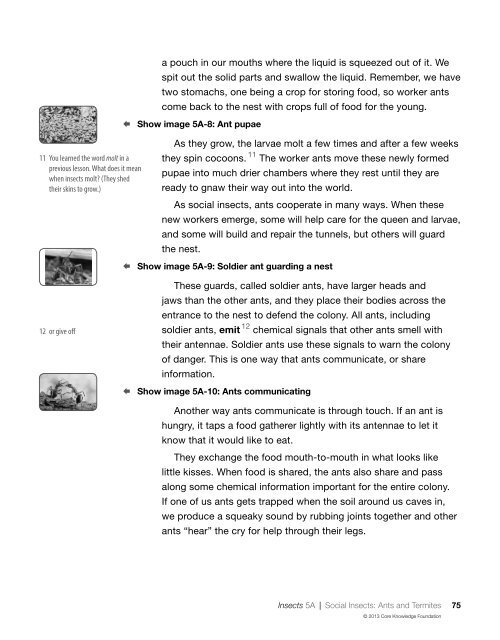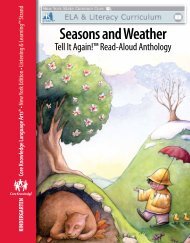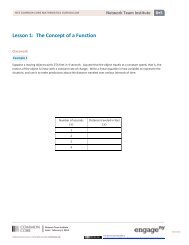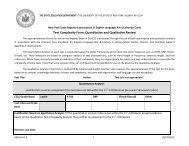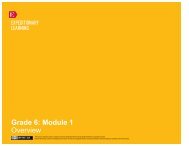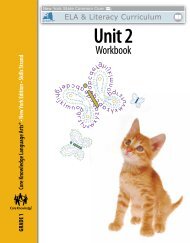Read-Aloud Anthology - EngageNY
Read-Aloud Anthology - EngageNY
Read-Aloud Anthology - EngageNY
Create successful ePaper yourself
Turn your PDF publications into a flip-book with our unique Google optimized e-Paper software.
a pouch in our mouths where the liquid is squeezed out of it. We<br />
spit out the solid parts and swallow the liquid. Remember, we have<br />
two stomachs, one being a crop for storing food, so worker ants<br />
come back to the nest with crops full of food for the young.<br />
Show image 5A-8: Ant pupae<br />
11 You learned the word molt in a<br />
previous lesson. What does it mean<br />
when insects molt? (They shed<br />
their skins to grow.)<br />
As they grow, the larvae molt a few times and after a few weeks<br />
they spin cocoons. 11 The worker ants move these newly formed<br />
pupae into much drier chambers where they rest until they are<br />
ready to gnaw their way out into the world.<br />
As social insects, ants cooperate in many ways. When these<br />
new workers emerge, some will help care for the queen and larvae,<br />
and some will build and repair the tunnels, but others will guard<br />
the nest.<br />
Show image 5A-9: Soldier ant guarding a nest<br />
12 or give off<br />
These guards, called soldier ants, have larger heads and<br />
jaws than the other ants, and they place their bodies across the<br />
entrance to the nest to defend the colony. All ants, including<br />
soldier ants, emit 12 chemical signals that other ants smell with<br />
their antennae. Soldier ants use these signals to warn the colony<br />
of danger. This is one way that ants communicate, or share<br />
information.<br />
Show image 5A-10: Ants communicating<br />
Another way ants communicate is through touch. If an ant is<br />
hungry, it taps a food gatherer lightly with its antennae to let it<br />
know that it would like to eat.<br />
They exchange the food mouth-to-mouth in what looks like<br />
little kisses. When food is shared, the ants also share and pass<br />
along some chemical information important for the entire colony.<br />
If one of us ants gets trapped when the soil around us caves in,<br />
we produce a squeaky sound by rubbing joints together and other<br />
ants “hear” the cry for help through their legs.<br />
Insects 5A | Social Insects: Ants and Termites 75<br />
© 2013 Core Knowledge Foundation


